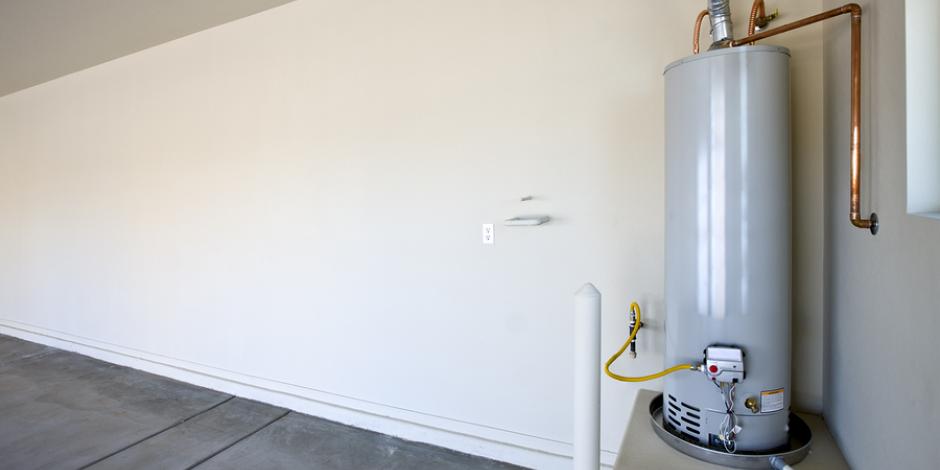How to Prolong the Lifespan of Your Home's Hot Water System By Maintenance
How to Prolong the Lifespan of Your Home's Hot Water System By Maintenance
Blog Article
We've discovered this post about How to Maintain Your Water Heater & Prolong its Life listed below on the internet and figured it made perfect sense to write about it with you on my blog.

Warm water is crucial for day-to-day convenience, whether it's for a refreshing shower or washing recipes. To ensure your hot water system runs efficiently and lasts much longer, routine maintenance is vital. This post offers practical tips and understandings on exactly how to maintain your home's warm water system to prevent disruptions and expensive repair work.
Introduction
Keeping your home's hot water system might appear challenging, yet with a couple of simple steps, you can guarantee it operates efficiently for years ahead. This guide covers every little thing from comprehending your hot water system to do it yourself maintenance ideas and knowing when to employ professional aid.
Value of Maintaining Your Warm Water System
Regular maintenance not just extends the life-span of your hot water system yet also guarantees it operates effectively. Disregarding maintenance can bring about reduced effectiveness, higher power costs, and also early failure of the system.
Indications Your Warm Water System Needs Maintenance
Recognizing when your hot water system needs focus can stop significant issues. Watch out for indicators such as inconsistent water temperature, odd sounds from the heating unit, or corroded water.
Understanding Your Hot Water System
Prior to diving right into upkeep tasks, it's handy to understand the fundamental parts of your warm water system. Generally, this includes the hot water heater itself, pipelines, anode rods, and temperature controls.
Regular Monthly Upkeep Tasks
Normal monthly checks can help catch minor concerns prior to they escalate.
Flushing the Water Heater
Flushing your water heater eliminates debris buildup, enhancing effectiveness and extending its life.
Monitoring and Changing Anode Rods
Anode poles protect against rust inside the storage tank. Checking and changing them when worn is vital.
Evaluating and Readjusting Temperature Settings
Adjusting the temperature settings ensures optimal performance and safety.
DIY Tips for Maintenance
You can carry out a number of maintenance tasks yourself to maintain your warm water system in top problem.
Looking for Leakages
On a regular basis evaluate pipelines and connections for leaks, as these can cause water damages and higher bills.
Testing Stress Alleviation Valves
Checking the stress safety valve ensures it functions correctly and prevents too much stress accumulation.
Shielding Pipes
Insulating hot water pipelines minimizes warm loss and can save power.
When to Call a Specialist
While do it yourself maintenance is advantageous, some issues call for expert competence.
Complex Issues Calling For Professional Assistance
Instances include significant leakages, electric issues, or if your water heater is consistently underperforming.
Regular Expert Maintenance Advantages
Specialist maintenance can include detailed assessments, tune-ups, and making certain conformity with security criteria.
Conclusion
Regular upkeep of your home's warm water system is vital for performance, long life, and expense financial savings. By following these pointers and understanding when to look for specialist assistance, you can guarantee a dependable supply of warm water without unexpected disturbances.
How to Maintain an Instant Hot Water Heater
Before tinkering with your hot water heater, make sure that it’s not powered on. You also have to turn off the main circuit breaker and shut off the main gas line to prevent accidents. Also turn off the water valves connected to your unit to prevent water from flowing into and out of the appliance. 2. When you’re done, you have to detach the purge valves’ caps. These look like the letter “T†and are situated on either side of the water valves. Doing so will release any pressure that has accumulated inside the valves while at the same time avoid hot water from shooting out and burning your skin. 3. When the purge valves’ caps are removed, you have to connect your hosing lines to the valves. Your unit should have come with three hoses but if it didn’t, you can purchase these things from any hardware or home repair shops. You can also get them from retail stores that sell water heating systems. Read the user’s manual and follow it to complete this task properly. When the hosing lines are connected, open the purge port’s valves. 4. You should never use harsh chemical cleaners or solutions when cleaning your unit. Make use of white vinegar instead. It should be undiluted and you’ll probably use about 2 gallons. 5. Now flush your water heater. This task should probably take about 40 minutes. We can’t give you specific directions for this because the procedure is carried out depending on the type, model and brand of your heater. With that being said, refer to the user’s manual. 6. When you’re done draining the unit, you have to turn off the purge port valves again. Remove the hosing lines that you earlier installed on each of the water valves. Put the valve caps (purge port) back in their respective places and be very careful so as not to damage the rubber discs that are found inside these caps. 7. Now that everything’s back in place, check your user’s manual again to find out how to reactivate your water heating system. 8. Once it is working, turn one of your hot water faucets on just to let air pass through the heater’s water supply pipes. Leave the tap on until water flows smoothly out of it. https://www.orrplumbing.com/blog/2014/september/how-to-maintain-an-instant-hot-water-heater/

I'm certainly very focused on Tips on Maintaining a Water Heater and I'm hoping you liked the new page. Sharing is caring. Helping others is fun. I cherish your readership.
Call Today Report this page